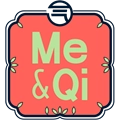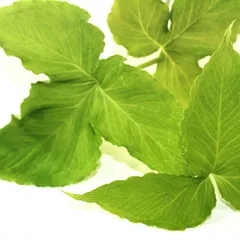Hypertension according to Chinese Medicine
The information provided here is not a replacement for a doctor. You shouldn't use it for the purpose of self-diagnosing or self-medicating but rather so you can have a more informed discussion with a professional TCM practitioner.
Hypertension factsheet
Possible causes and remedies:
Spleen and Stomach Qi Deficiency
Symptoms: Deafness Tinnitus Dizziness and seven other symptoms
Recommended formula: Bu Zhong Yi Qi Tang
Symptoms: Aversion to cold Spontaneous sweating Thirst for warm drinks and one other symptom
Recommended formula: Bu Zhong Yi Qi Tang
In Chinese Medicine, hypertension can be associated with twenty so-called "patterns of disharmony". Chinese Medicine sees the body as a system, not a sum of isolated parts. A "pattern" is when the system's harmony is disrupted. It is not equivalent to the Western concept of "disease", as a matter of fact here hypertension can be caused by twenty different patterns.
To understand whether someone's hypertension might be caused by a given pattern, one needs to look for signs and symptoms associated with the pattern beyond what one might typically experience from hypertension alone. For instance when hypertension is caused by the pattern Spleen and Stomach Qi Deficiency, patients also experience symptoms such as dizziness, unsteadiness, blurred vision and deafness. Similarly, patients with Spleen and Stomach Qi Deficiency typically exhibit weak (Ruo) pulses as well as a pale tongue.
We've listed below a description of the twenty patterns associated with hypertension so that you can start to get an understanding of the various possibilities according to Chinese Medicine.
Once identified, patterns are often treated using herbal formulas. Drinking herbal infusions is the most common remedy in Chinese Medicine, together with acupuncture. Here we detail below thirty formulas that can help treat the various patterns associated with hypertension, depending on which pattern fits your profile.
The twenty "patterns of disharmony" associated with hypertension

The Spleen is a so-called "Zang" Organ. Learn more about the Spleen in Chinese Medicine
Spleen and Stomach Qi Deficiency
Pulse type(s): Weak (Ruo)
Tongue color: Pale
Recommended herbal formula: Bu Zhong Yi Qi Tang
Symptoms: Deafness Tinnitus Dizziness Weak voice Unsteadiness Loose stools Poor appetite Blurred vision Pale complexion Shortness of breath
Hypertension might be due to Spleen and Stomach Qi Deficiency if the condition is paired with typical pattern symptoms such as dizziness, unsteadiness, blurred vision and deafness. Similarly, patients with Spleen and Stomach Qi Deficiency typically exhibit weak (Ruo) pulses as well as a pale tongue.

Milkvetch Roots (Huang Qi) is the key herb for Bu Zhong Yi Qi Tang, a formula used for Qi Deficiency Fever
Qi Deficiency Fever
Pulse type(s): Empty (Xu)
Tongue color: Pale
Tongue shape: Swollen
Recommended herbal formula: Bu Zhong Yi Qi Tang
Symptoms: Aversion to cold Spontaneous sweating Thirst for warm drinks Intermittent fever that worsens upon exertion
Hypertension might be due to Qi Deficiency Fever if the condition is paired with typical pattern symptoms such as intermittent fever that worsens upon exertion, spontaneous sweating, aversion to cold and thirst for warm drinks. Similarly, patients with Qi Deficiency Fever typically exhibit empty (Xu) pulses as well as a pale tongue.

The Triple Burner is a so-called "Fu" Organ. Learn more about the Triple Burner in Chinese Medicine
Heat and Blood Stagnation in the Lower Burner
Pulse type(s): Choppy (Se), Full (Shi)
Recommended herbal formula: Tao He Cheng Qi Tang
Symptoms: Thirst Amenorrhea Night fever Irritability Dysmenorrhea Restlnessness Delirious speech Lower abdominal pain
Hypertension might be due to Heat and Blood Stagnation in the Lower Burner if the condition is paired with typical pattern symptoms such as lower abdominal pain, night fever, delirious speech and irritability. Similarly, patients with Heat and Blood Stagnation in the Lower Burner typically exhibit choppy (Se) or full (Shi) pulses.
Read more about Heat and Blood Stagnation in the Lower Burner here

Crow-Dipper Rhizomes (Ban Xia) is the key herb for Ban Xia Bai Zhu Tian Ma Tang, a formula used for Wind-Phlegm
Wind-Phlegm
Pulse type(s): Slippery (Hua), Wiry (Xian)
Tongue coating: Thick white coating
Recommended herbal formula: Ban Xia Bai Zhu Tian Ma Tang
Symptoms: Headaches Copious sputum Nausea or vomiting Dizziness or vertigo Stifling sensation in the chest
Hypertension might be due to Wind-Phlegm if the condition is paired with typical pattern symptoms such as dizziness or vertigo, headaches, stifling sensation in the chest and nausea or vomiting. Similarly, patients with Wind-Phlegm typically exhibit slippery (Hua) or wiry (Xian) pulses as well as a tongue with thick white coating.
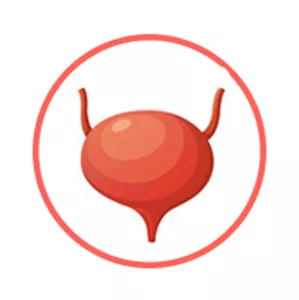
The Bladder is a so-called "Fu" Organ. Learn more about the Bladder in Chinese Medicine
Qi Stagnation in Gallbladder and Stomach with Phlegm Heat
Pulse type(s): Slippery (Hua), Wiry (Xian)
Tongue coating: Yellow coating
Recommended herbal formula: Wen Dan Tang
Symptoms: Anxiety Palpitations Slight thirst Nausea or vomiting Dizziness or vertigo Bitter taste in the mouth Indeterminate gnawing hunger Focal distention of the chest Coughing of copious thick yellow sputum Dream disturbed sleep with strange or unusual dreams
Hypertension might be due to Qi Stagnation in Gallbladder and Stomach with Phlegm Heat if the condition is paired with typical pattern symptoms such as nausea or vomiting, dizziness or vertigo, dream disturbed sleep with strange or unusual dreams and palpitations. Similarly, patients with Qi Stagnation in Gallbladder and Stomach with Phlegm Heat typically exhibit slippery (Hua) or wiry (Xian) pulses as well as a tongue with yellow coating.
Read more about Qi Stagnation in Gallbladder and Stomach with Phlegm Heat here

The Bladder is a so-called "Fu" Organ. Learn more about the Bladder in Chinese Medicine
Heat in Gall Bladder
Pulse type(s): Rapid (Shu), Wiry (Xian)
Tongue coating: Thick coating, Yellow coating
Tongue color: Red
Recommended herbal formula: Hao Qin Qing Dan Tang
Symptoms: Thirst Nausea Epigastrium fullness Bitter taste in the mouth Stifling sensation in the chest Spitting up bitter or sour fluids Mild chills alternating with pronounced fever Distention and pain in the chest and hypochondria
Hypertension might be due to Heat in Gall Bladder if the condition is paired with typical pattern symptoms such as mild chills alternating with pronounced fever, bitter taste in the mouth, stifling sensation in the chest and spitting up bitter or sour fluids. Similarly, patients with Heat in Gall Bladder typically exhibit rapid (Shu) or wiry (Xian) pulses as well as a red tongue with thick coating, yellow coating.

Rhubarb (Da Huang) is the key herb for Da Cheng Qi Tang, a formula used for Heat in Yang brightness Organs
Heat in Yang brightness Organs
Pulse type(s): Full (Shi)
Tongue coating: Grey or black coating, Yellow coating
Recommended herbal formula: Da Cheng Qi Tang
Symptoms: Flatulence Focal distention Abdominal fullness Severe constipation Tense and firm abdomen Abdominal pain that increases upon pressure
Hypertension might be due to Heat in Yang brightness Organs if the condition is paired with typical pattern symptoms such as severe constipation, flatulence, focal distention and abdominal fullness. Similarly, patients with Heat in Yang brightness Organs typically exhibit full (Shi) pulses as well as a tongue with grey or black coating, yellow coating.

Rhubarb (Da Huang) is the key herb for Da Cheng Qi Tang, a formula used for Yang Excess
Yang Excess
Recommended herbal formula: Da Cheng Qi Tang
Hypertension might be due to Yang Excess if the condition is paired with typical pattern symptoms such as .

The Spleen is a so-called "Zang" Organ. Learn more about the Spleen in Chinese Medicine
Spleen or Kidney Yang Deficiency
Pulse type(s): Deep (Chen), Fine (Xi)
Tongue color: Pale
Tongue shape: Swollen, Tooth-marked
Recommended herbal formula: Zhen Wu Tang
Symptoms: Edema Coughing Vomiting Dizziness Loose stools Palpitations Urinary difficulty Heavy sensation in the head Abdominal pain that worsens with cold Deep aching and heaviness in the extremities
Hypertension might be due to Spleen or Kidney Yang Deficiency if the condition is paired with typical pattern symptoms such as abdominal pain that worsens with cold, urinary difficulty, deep aching and heaviness in the extremities and dizziness. Similarly, patients with Spleen or Kidney Yang Deficiency typically exhibit deep (Chen) or fine (Xi) pulses as well as a pale tongue.

Prepared Aconite (Zhi Fu Zi) is the key herb for Zhen Wu Tang, a formula used for Exterior Cold invading the Interior
Exterior Cold invading the Interior
Pulse type(s): Deep (Chen), Fine (Xi)
Tongue coating: Thin white coating
Recommended herbal formula: Zhen Wu Tang
Symptoms: Dizziness Unsteadiness Generalized twitching Palpitations in the epigastrium Sweating that doesn't reduce fever
Hypertension might be due to Exterior Cold invading the Interior if the condition is paired with typical pattern symptoms such as sweating that doesn't reduce fever, palpitations in the epigastrium, dizziness and generalized twitching. Similarly, patients with Exterior Cold invading the Interior typically exhibit deep (Chen) or fine (Xi) pulses as well as a tongue with thin white coating.

The Spleen is a so-called "Zang" Organ. Learn more about the Spleen in Chinese Medicine
Spleen Yang Deficiency
Pulse type(s): Deep (Chen), Slow (Chi), Weak (Ruo)
Tongue color: Pale
Recommended herbal formulas: Zhen Wu Tang Bu Zhong Yi Qi Tang, Yi Huang Tang, Huang Tu Tang, Wen Pi Tang, Zhen Wu Tang
Symptoms: Gas Edema Chills Fatigue Bloating Lassitude Cold limbs Weak Limbs Loose stools Poor appetite Pale complexion Feeling of cold Vagina discharge Sallow complexion Desire to lie down curled up Undigested food in the stools Slight abdominal distension after eating Abdominal pain and distension relieved by pressure and warmth
Generally speaking, Spleen Yang Deficiency often develops from Spleen Qi Deficiency, but it is more extensive and severe. The common manifestations are these related to digestive functions such as loose stools, poor appetite, slight abdominal distension and pain after eating, gas and bloating. Since the Spleen fails to transport the Food Qi to the body, patients also suffer from general fatigue, lassitude, weak limbs, pale tongue and face. Patients prefers to lie down.
On top of above, the Yang Deficiency also brings in additional Cold symptoms, such as a cold feeling and cold limbs. It is because Spleen Yang fails to warm the body and Organs. Therefore, the body metabolism get slower and some food are not digested properly and passes directly into the stools.
Since the Spleen fails to perform the function of transforming and transporting fluids, the circulation of Body Fluids is disturbed, causing symptoms such as Oedema, vaginal discharge and Lung mucus. The Yang Deficiency pattern is even more likely to form Dampness and Phlegm.

The Kidneys is a so-called "Zang" Organ. Learn more about the Kidneys in Chinese Medicine
Kidney and Liver Yin Deficiency
Pulse type(s): Fine (Xi), Rapid (Shu)
Tongue coating: Partial absence of coating
Tongue color: Red
Recommended herbal formula: Liu Wei Di Huang Wan
Symptoms: Vertigo Tinnitus Night sweats Lightheadedness Diminished hearing Chronic sore throat Spontaneous and nocturnal emissions Soreness and weakness in the lower back
Hypertension might be due to Kidney and Liver Yin Deficiency if the condition is paired with typical pattern symptoms such as soreness and weakness in the lower back, lightheadedness, vertigo and tinnitus. Similarly, patients with Kidney and Liver Yin Deficiency typically exhibit fine (Xi) or rapid (Shu) pulses as well as a red tongue with partial absence of coating.

The Kidneys is a so-called "Zang" Organ. Learn more about the Kidneys in Chinese Medicine
Kidney Yang Deficiency
Recommended herbal formula: Ba Wei Di Huang Wan
Symptoms: Asthma Dysuria Coughing Impotence Spermatorrhea Frequent urination Persistent diarrhea Prostatic hypertrophy Spasms of the lower abdomen Cold in the lower extremities Soreness and weakness in the lower back
Hypertension might be due to Kidney Yang Deficiency if the condition is paired with typical pattern symptoms such as soreness and weakness in the lower back, cold in the lower extremities, impotence and spermatorrhea.

The Heart is a so-called "Zang" Organ. Learn more about the Heart in Chinese Medicine
Disharmony between Heart and Kidneys caused by Kidney Yang Deficiency
Pulse type(s): Fine (Xi), Rapid (Shu)
Tongue coating: Partial absence of coating
Tongue color: Red
Recommended herbal formula: Jiao Tai Wan
Symptoms: Anxiety Insomnia Irritability Restlnessness Coolness of the lower limbs Severe and continuous palpitations
Hypertension might be due to Disharmony between Heart and Kidneys caused by Kidney Yang Deficiency if the condition is paired with typical pattern symptoms such as irritability, restlnessness, severe and continuous palpitations and coolness of the lower limbs. Similarly, patients with Disharmony between Heart and Kidneys caused by Kidney Yang Deficiency typically exhibit fine (Xi) or rapid (Shu) pulses as well as a red tongue with partial absence of coating.
Read more about Disharmony between Heart and Kidneys caused by Kidney Yang Deficiency here

The Liver is a so-called "Zang" Organ. Learn more about the Liver in Chinese Medicine
Liver Wind agitating Internally due to Liver Yang Rising
Pulse type(s): Rapid (Shu), Wiry (Xian)
Tongue color: Red
Recommended herbal formula: Tian Ma Gou Teng Yin
Symptoms: Vertigo Tinnitus Insomnia Headaches Dizziness Blurred vision Dream disturbed sleep Spasms in the extremities Numbness in the extremities Twitching in the extremities Feeling of heat rushing to the head
Hypertension might be due to Liver Wind agitating Internally due to Liver Yang Rising if the condition is paired with typical pattern symptoms such as headaches, dizziness, vertigo and tinnitus. Similarly, patients with Liver Wind agitating Internally due to Liver Yang Rising typically exhibit rapid (Shu) or wiry (Xian) pulses as well as a red tongue.
Read more about Liver Wind agitating Internally due to Liver Yang Rising here

The Lungs is a so-called "Zang" Organ. Learn more about the Lungs in Chinese Medicine
Lung Yin Deficiency
Pulse type(s): Rapid (Shu), Empty (Xu), Floating (Fu)
Tongue coating: Complete absence of coating
Tongue color: Red
Recommended herbal formulas: Yang Yin Qing Fei Tang, Qing Zao Jiu Fei Tang, Bu Fei E Jiao Tang, Jiu Xian San, Bai He Gu Jin Tang, Mai Men Dong Tang
Symptoms: Insomnia Dry cough Dry mouth Tiredness Thin chest Weak voice Dry throat Malar flush Hoarse voice Night sweats Tickly throat Aversion to speak Hot palms and soles Thin body lacking strength Feeling of heat in the afternoon Low-grade fever in the afternoon
Exterior Heat and Dryness can invade the Lungs and exhausts the Body Fluids. If it is not dealt with for a long time, it leads to Lung Yin Deficiency. Typical manifestations are dry cough, throat and mouth, aversion to speak as well as Hoarse voice.
Other factors can cause this pattern such as the Deficiency of Kidneys or Stomach Yin as well as prolonged Lung Qi Deficiency due to excessive smoking or use of voice.
Empty-Heat symptoms appear if the Lung Yin Deficiency condition is not treated for a while. Patients can feel malar flush, low-grade fever as well as Heat in the palms and chest, especially in the evenings.
Lung Yin Deficiency generally occurs in middle-aged and elderly patients as a result of overwork, irregular diet and smoking. However, it can also occur in a child after whooping cough.

The Stomach is a so-called "Fu" Organ. Learn more about the Stomach in Chinese Medicine
Stomach Yin Deficiency
Pulse type(s): Empty (Xu), Floating (Fu)
Tongue coating: Partial absence of coating
Tongue color: Red
Recommended herbal formulas: Mai Men Dong Tang, Yi Wei Tang Shen Ling Bai Zhu San, Mai Men Dong Tang, Yi Wei Tang
Symptoms: Thirst Retching Dry mouth Hiccuping Dry throat Dry stools Constipation Poor appetite Slight thirst Bleeding gums Epigastic pain Epigastric pain No desire to eat Feeling of hunger Feeling of fullness Hot palms and soles Desire to drink in small sips Feeling of heat in the afternoon Slight feeling of fullness after eating
The Stomach is responsible for receiving foods and drinks, ripening them and sending them to the Spleen for further digestion. Therefore, the Stomach is the origin of Body Fluids. It is also an Organ that likes Cold and Dampness which are both Yin characteristics. Stomach Yin Deficiency harms this functions and cause Dryness and Heat. As a result, symptoms such as thirst, dry stools, dry mouth and dry throat appear. It also cause the tongue coating to fall off.
Due to lack of Body Fluids, there is constipation with dry stools. Retching and hiccups may also occur as Stomach's Qi downward function is impaired.
If the Yin Deficiency situation last for a long period of time, it can potentially develop Empty-Heat. It's typical manifestations are often quite mild and appears only in the afternoon or evening, such the mild fever or feeling of heat. The patients experiences thirst or hunger but there is no desire to drink or eat, or they only drink in small sips. They also prefer warm liquids and their appetite is poor.

Poria-Cocos Mushrooms (Fu Ling) is the key herb for Ling Gui Zhu Gan Tang, a formula used for Phlegm-Fluids in the hypochondrium
Phlegm-Fluids in the hypochondrium
Pulse type(s): Slippery (Hua), Soggy (Ru), Wiry (Xian)
Tongue coating: Thick white coating
Tongue color: Pale
Tongue shape: Swollen
Recommended herbal formula: Ling Gui Zhu Gan Tang
Symptoms: Palpitations Dizziness or vertigo
Hypertension might be due to Phlegm-Fluids in the hypochondrium if the condition is paired with typical pattern symptoms such as palpitations and dizziness or vertigo. Similarly, patients with Phlegm-Fluids in the hypochondrium typically exhibit slippery (Hua), soggy (Ru) or wiry (Xian) pulses as well as a pale tongue with thick white coating.

The Pericardium is a so-called "Zang" Organ. Learn more about the Pericardium in Chinese Medicine
Pericardium Blood Stagnation
Pulse type(s): Knotted (Jie), Wiry (Xian)
Tongue color: Bluish-Purple
Recommended herbal formula: Xue Fu Zhu Yu Tang
Symptoms: Chest pain Purple lips Palpitations Purple nails Painful period Hypochondriac pain Shortness of breath Dark clots in menstrual blood Feeling of oppression of the chest
Hypertension might be due to Pericardium Blood Stagnation if the condition is paired with typical pattern symptoms such as chest pain, hypochondriac pain, palpitations and painful period. Similarly, patients with Pericardium Blood Stagnation typically exhibit knotted (Jie) or wiry (Xian) pulses as well as a bluish-purple tongue.

The Stomach is a so-called "Fu" Organ. Learn more about the Stomach in Chinese Medicine
Stomach Blood Stagnation
Pulse type(s): Wiry (Xian)
Tongue color: Bluish-Purple
Recommended herbal formula: Xue Fu Zhu Yu Tang
Symptoms: Nausea Vomiting Epigastric pain Vomiting of blood
Hypertension might be due to Stomach Blood Stagnation if the condition is paired with typical pattern symptoms such as epigastric pain, nausea, vomiting and vomiting of blood. Similarly, patients with Stomach Blood Stagnation typically exhibit wiry (Xian) pulses as well as a bluish-purple tongue.
The thirty herbal formulas that might help with hypertension



The top herbs in Zhen Wu Tang are Prepared Aconite (Zhi Fu Zi), Atractylodes Rhizomes (Bai Zhu) and Poria-Cocos Mushrooms (Fu Ling)
Zhen Wu Tang
Source date: 220 AD
Number of ingredients: 5 herbs
Key actions: Warms and tonifies the Yang and Qi of the Spleen and Kidneys. Eliminates Dampness.
Why might Zhen Wu Tang help with hypertension?
Because it is a formula often recommended to help with the patterns Spleen or Kidney Yang Deficiency, Exterior Cold invading the Interior and Spleen Yang Deficiency which are sometimes associated with hypertension. If any of these patterns look like something you might suffer from, this formula might help (although please seek confirmation with a professional practitioner beforehand).



The top herbs in Bu Zhong Yi Qi Tang are Milkvetch Roots (Huang Qi), Atractylodes Rhizomes (Bai Zhu) and Ginseng (Ren Shen)
Bu Zhong Yi Qi Tang
Source date: 1247
Number of ingredients: 10 herbs
Key actions: Tonifies Qi of the Spleen and Stomach (Middle Burner). Raises the Yang. Detoxifies. Lifts what has sunken.
Why might Bu Zhong Yi Qi Tang help with hypertension?
Because it is a formula often recommended to help with the patterns Spleen and Stomach Qi Deficiency and Qi Deficiency Fever which are sometimes associated with hypertension. If any of these patterns look like something you might suffer from, this formula might help (although please seek confirmation with a professional practitioner beforehand).


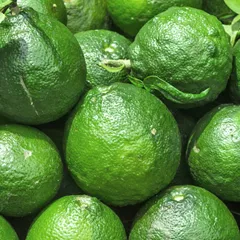
The top herbs in Da Cheng Qi Tang are Rhubarb (Da Huang), Mirabilites (Mang Xiao) and Immature Bitter Oranges (Zhi Shi)
Da Cheng Qi Tang
Source date: 220 AD
Number of ingredients: 4 herbs
Key actions: Purges Heat from the Stomach and Intestines. Relieves constipation.
Why might Da Cheng Qi Tang help with hypertension?
Because it is a formula often recommended to help with the patterns Heat in Yang brightness Organs and Yang Excess which are sometimes associated with hypertension. If any of these patterns look like something you might suffer from, this formula might help (although please seek confirmation with a professional practitioner beforehand).



The top herbs in Mai Men Dong Tang are Dwarf Lilyturf Roots (Mai Dong), Ginseng (Ren Shen) and Rice Sprouts (Jing Mi)
Mai Men Dong Tang
Source date: 220 AD
Number of ingredients: 6 herbs
Key actions: Nourishes the Stomach. Generates Body Fluids. Directs Rebellious Qi downward.
Why might Mai Men Dong Tang help with hypertension?
Because it is a formula often recommended to help with the patterns Lung Yin Deficiency and Stomach Yin Deficiency which are sometimes associated with hypertension. If any of these patterns look like something you might suffer from, this formula might help (although please seek confirmation with a professional practitioner beforehand).



The top herbs in Xue Fu Zhu Yu Tang are Peach Kernels (Tao Ren), Safflowers (Hong Hua) and Szechuan Lovage Roots (Chuan Xiong)
Xue Fu Zhu Yu Tang
Source date: 1830 AD
Number of ingredients: 11 herbs
Key actions: Invigorates the Blood. Dispels blood Stagnation. Spreads the Liver Qi. Unblocks the channels.
Why might Xue Fu Zhu Yu Tang help with hypertension?
Because it is a formula often recommended to help with the patterns Pericardium Blood Stagnation and Stomach Blood Stagnation which are sometimes associated with hypertension. If any of these patterns look like something you might suffer from, this formula might help (although please seek confirmation with a professional practitioner beforehand).



The top herbs in Tao He Cheng Qi Tang are Peach Kernels (Tao Ren), Rhubarb (Da Huang) and Cinnamon Twigs (Gui Zhi)
Tao He Cheng Qi Tang
Source date: 220 AD
Number of ingredients: 5 herbs
Key actions: Dispels Heat and. Eliminates Blood Stagnation.
Why might Tao He Cheng Qi Tang help with hypertension?
Because it is a formula often recommended to help treat Heat and Blood Stagnation in the Lower Burner, a pattern sometimes associated with hypertension. If it looks like you might suffer from Heat and Blood Stagnation in the Lower Burner, this formula might help (although please seek confirmation with a professional practitioner beforehand).
Ban Xia Bai Zhu Tian Ma Tang
Source date: 1732 AD
Number of ingredients: 8 herbs
Key actions: Dries and dissolves Phlegm. Strengthens the Spleen. Soothes the Liver and calms Liver Wind (antispasmodic). Clear Dampness.
Why might Ban Xia Bai Zhu Tian Ma Tang help with hypertension?
Because it is a formula often recommended to help treat Wind-Phlegm, a pattern sometimes associated with hypertension. If it looks like you might suffer from Wind-Phlegm, this formula might help (although please seek confirmation with a professional practitioner beforehand).
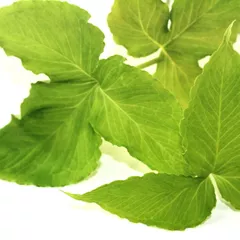
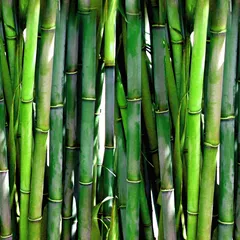

The top herbs in Wen Dan Tang are Crow-Dipper Rhizomes (Ban Xia), Bamboo Shavings (Zhu Ru) and Immature Bitter Oranges (Zhi Shi)
Wen Dan Tang
Source date: 1174 AD
Number of ingredients: 8 herbs
Key actions: Clears Phlegm. Clears Gallbladder. Regulates Qi. Harmonizes the Stomach.
Why might Wen Dan Tang help with hypertension?
Because it is a formula often recommended to help treat Qi Stagnation in Gallbladder and Stomach with Phlegm Heat, a pattern sometimes associated with hypertension. If it looks like you might suffer from Qi Stagnation in Gallbladder and Stomach with Phlegm Heat, this formula might help (although please seek confirmation with a professional practitioner beforehand).



The top herbs in Hao Qin Qing Dan Tang are Sweet Wormwood Herbs (Qing Hao), Baikal Skullcap Roots (Huang Qin) and Bamboo Shavings (Zhu Ru)
Hao Qin Qing Dan Tang
Source date: Qing Dynasty
Number of ingredients: 10 herbs
Key actions: Clears Heat and relieves acute conditions of the Gallbladder. Relieves acute Damp-Heat syndromes. Resolves Phlegm. Harmonizes the Stomach.
Why might Hao Qin Qing Dan Tang help with hypertension?
Because it is a formula often recommended to help treat Heat in Gall Bladder, a pattern sometimes associated with hypertension. If it looks like you might suffer from Heat in Gall Bladder, this formula might help (although please seek confirmation with a professional practitioner beforehand).



The top herbs in Liu Wei Di Huang Wan are Prepared Rehmannia (Shu Di huang), Cornelian Cherries (Shan Zhu Yu) and Yam (Shan Yao)
Liu Wei Di Huang Wan
Source date: 1119 AD
Number of ingredients: 6 herbs
Key actions: Enriches the yin and nourishes the Kidneys.
Why might Liu Wei Di Huang Wan help with hypertension?
Because it is a formula often recommended to help treat Kidney and Liver Yin Deficiency, a pattern sometimes associated with hypertension. If it looks like you might suffer from Kidney and Liver Yin Deficiency, this formula might help (although please seek confirmation with a professional practitioner beforehand).



The top herbs in Ba Wei Di Huang Wan are Prepared Rehmannia (Shu Di huang), Cornelian Cherries (Shan Zhu Yu) and Yam (Shan Yao)
Ba Wei Di Huang Wan
Source date: 220 AD
Number of ingredients: 8 herbs
Key actions: Tonifies Yang. Warms the Kidneys and lower extremities.
Why might Ba Wei Di Huang Wan help with hypertension?
Because it is a formula often recommended to help treat Kidney Yang Deficiency, a pattern sometimes associated with hypertension. If it looks like you might suffer from Kidney Yang Deficiency, this formula might help (although please seek confirmation with a professional practitioner beforehand).
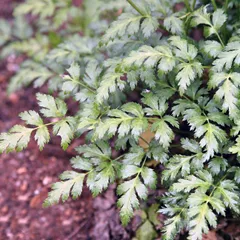


The top herbs in Jiao Tai Wan are Goldthread Rhizomes (Huang Lian) and Cinnamon Bark (Rou Gui)
Jiao Tai Wan
Source date: 1522 AD
Number of ingredients: 2 herbs
Key actions: Restores the functional communication between the Heart and the Kidneys.
Why might Jiao Tai Wan help with hypertension?
Because it is a formula often recommended to help treat Disharmony between Heart and Kidneys caused by Kidney Yang Deficiency, a pattern sometimes associated with hypertension. If it looks like you might suffer from Disharmony between Heart and Kidneys caused by Kidney Yang Deficiency, this formula might help (although please seek confirmation with a professional practitioner beforehand).



The top herbs in Tian Ma Gou Teng Yin are Gastrodia Rhizomes (Tian Ma), Gambir Stems And Thorns (Gou Teng) and Abalone Shells (Shi Jue Ming)
Tian Ma Gou Teng Yin
Source date: 1958 AD
Number of ingredients: 11 herbs
Key actions: Calms the Liver. Extinguishes wind. Invigorates the blood. Clears heat. Tonifies the Liver and Kidneys.
Why might Tian Ma Gou Teng Yin help with hypertension?
Because it is a formula often recommended to help treat Liver Wind agitating Internally due to Liver Yang Rising, a pattern sometimes associated with hypertension. If it looks like you might suffer from Liver Wind agitating Internally due to Liver Yang Rising, this formula might help (although please seek confirmation with a professional practitioner beforehand).



The top herbs in Ling Gui Zhu Gan Tang are Poria-Cocos Mushrooms (Fu Ling), Cinnamon Twigs (Gui Zhi) and Atractylodes Rhizomes (Bai Zhu)
Ling Gui Zhu Gan Tang
Source date: 220 AD
Number of ingredients: 4 herbs
Key actions: Warms and transforms Phlegm-Fluids. Strengthens the Spleen. Resolves Dampness.
Why might Ling Gui Zhu Gan Tang help with hypertension?
Because it is a formula often recommended to help treat Phlegm-Fluids in the hypochondrium, a pattern sometimes associated with hypertension. If it looks like you might suffer from Phlegm-Fluids in the hypochondrium, this formula might help (although please seek confirmation with a professional practitioner beforehand).



The top herbs in Zuo Gui Wan are Prepared Rehmannia (Shu Di huang), Goji Berries (Gou Qi Zi) and Cornelian Cherries (Shan Zhu Yu)
Zuo Gui Wan
Source date: 1624 AD
Number of ingredients: 8 herbs
Key actions: Nourishes the Yin. Strengthens the Kidneys. Fills the Essence. Augments the marrow.
Why might Zuo Gui Wan help with hypertension?
Because it is a formula often recommended to help treat , a pattern sometimes associated with hypertension. If it looks like you might suffer from , this formula might help (although please seek confirmation with a professional practitioner beforehand).



The top herbs in Xie Xin Tang are Rhubarb (Da Huang), Goldthread Rhizomes (Huang Lian) and Baikal Skullcap Roots (Huang Qin)
Xie Xin Tang
Source date: 220 AD
Number of ingredients: 3 herbs
Key actions: Drains Fire. Resolves Toxicity. Dries Dampness.
Why might Xie Xin Tang help with hypertension?
Because it is a formula often recommended to help treat , a pattern sometimes associated with hypertension. If it looks like you might suffer from , this formula might help (although please seek confirmation with a professional practitioner beforehand).



The top herbs in Huang Lian Wen Dan Tang are Crow-Dipper Rhizomes (Ban Xia), Bamboo Shavings (Zhu Ru) and Goldthread Rhizomes (Huang Lian)
Huang Lian Wen Dan Tang
Source date: 1852 AD
Number of ingredients: 7 herbs
Key actions: Clears Hot Phlegm. Clears Gallbladder Heat. Regulates Qi. Harmonizes the Stomach.
Why might Huang Lian Wen Dan Tang help with hypertension?
Because it is a formula often recommended to help treat , a pattern sometimes associated with hypertension. If it looks like you might suffer from , this formula might help (although please seek confirmation with a professional practitioner beforehand).



The top herbs in Ge Gen Tang are Kudzu Roots (Ge Gen), Ephedra (Ma Huang) and Cinnamon Twigs (Gui Zhi)
Ge Gen Tang
Source date: 220 AD
Number of ingredients: 7 herbs
Key actions: Releases the Exterior and muscle layer. Forms Body Fluids.
Why might Ge Gen Tang help with hypertension?
Because it is a formula often recommended to help treat , a pattern sometimes associated with hypertension. If it looks like you might suffer from , this formula might help (although please seek confirmation with a professional practitioner beforehand).
Ge Geng Huang Qin Huang Lian Tang
Why might Ge Geng Huang Qin Huang Lian Tang help with hypertension?
Because it is a formula often recommended to help treat , a pattern sometimes associated with hypertension. If it looks like you might suffer from , this formula might help (although please seek confirmation with a professional practitioner beforehand).



The top herbs in Shu Jing Huo Xue Tang are Dong Quai (Dang Gui), White Peony Roots (Bai Shao) and Szechuan Lovage Roots (Chuan Xiong)
Shu Jing Huo Xue Tang
Source date: 1587 AD
Number of ingredients: 16 herbs
Key actions: Expels Wind Damp from the Channels. Invigorates Blood. Unblocks the channels.
Why might Shu Jing Huo Xue Tang help with hypertension?
Because it is a formula often recommended to help treat , a pattern sometimes associated with hypertension. If it looks like you might suffer from , this formula might help (although please seek confirmation with a professional practitioner beforehand).



The top herbs in Bu Yang Huang Wu Tang are Milkvetch Roots (Huang Qi), Dong Quai (Dang Gui) and Szechuan Lovage Roots (Chuan Xiong)
Bu Yang Huang Wu Tang
Source date: 1830 AD
Number of ingredients: 7 herbs
Key actions: Tonifies Qi. Invigorates Blood. Unblocks the channels.
Why might Bu Yang Huang Wu Tang help with hypertension?
Because it is a formula often recommended to help treat , a pattern sometimes associated with hypertension. If it looks like you might suffer from , this formula might help (although please seek confirmation with a professional practitioner beforehand).



The top herbs in Huang Lian E Jiao Tang are Goldthread Rhizomes (Huang Lian), Donkey-Hide Gelatin (E Jiao) and Baikal Skullcap Roots (Huang Qin)
Huang Lian E Jiao Tang
Source date: 220 AD
Number of ingredients: 5 herbs
Key actions: Enriches the Yin. Causes Fire to descend. Eliminates irritability. Calms the spirit.
Why might Huang Lian E Jiao Tang help with hypertension?
Because it is a formula often recommended to help treat , a pattern sometimes associated with hypertension. If it looks like you might suffer from , this formula might help (although please seek confirmation with a professional practitioner beforehand).



The top herbs in Zhen Gan Xi Feng Tang are Achyranthes Roots (Niu Xi), Hematite (Dai Zhe Shi) and Dragon Bones (Long Gu)
Zhen Gan Xi Feng Tang
Source date: 1918 AD
Number of ingredients: 12 herbs
Key actions: Pacifies the Liver. Extinguishes Wind. Nourishes the Yin. Anchors the Yang.
Why might Zhen Gan Xi Feng Tang help with hypertension?
Because it is a formula often recommended to help treat , a pattern sometimes associated with hypertension. If it looks like you might suffer from , this formula might help (although please seek confirmation with a professional practitioner beforehand).



The top herbs in Da Chai Hu Tang are Bupleurum Roots (Chai Hu), Rhubarb (Da Huang) and Baikal Skullcap Roots (Huang Qin)
Da Chai Hu Tang
Source date: 220 AD
Number of ingredients: 8 herbs
Key actions: Harmonizes and releases the Lesser Yang. Drains internal clumping due to Heat.
Why might Da Chai Hu Tang help with hypertension?
Because it is a formula often recommended to help treat , a pattern sometimes associated with hypertension. If it looks like you might suffer from , this formula might help (although please seek confirmation with a professional practitioner beforehand).



The top herbs in Zhi Zi Chi Tang are Cape Jasmine Fruits (Zhi Zi) and Fermented Soybeans (Dan Dou Chi)
Zhi Zi Chi Tang
Source date: 220 AD
Number of ingredients: 2 herbs
Key actions: Clears Heat. Alleviates restlessness and irritability.
Why might Zhi Zi Chi Tang help with hypertension?
Because it is a formula often recommended to help treat , a pattern sometimes associated with hypertension. If it looks like you might suffer from , this formula might help (although please seek confirmation with a professional practitioner beforehand).
Huang Lian Jiao Du Tang
Why might Huang Lian Jiao Du Tang help with hypertension?
Because it is a formula often recommended to help treat , a pattern sometimes associated with hypertension. If it looks like you might suffer from , this formula might help (although please seek confirmation with a professional practitioner beforehand).



The top herbs in Wu Zhu Yu Tang are Evodia Fruits (Wu Zhu Yu), Fresh Ginger (Sheng Jiang) and Ginseng (Ren Shen)
Wu Zhu Yu Tang
Source date: 220 AD
Number of ingredients: 4 herbs
Key actions: Warms and tonifies the Liver and Stomach. Directs Rebellious Qi downward. Stops vomiting.
Why might Wu Zhu Yu Tang help with hypertension?
Because it is a formula often recommended to help treat , a pattern sometimes associated with hypertension. If it looks like you might suffer from , this formula might help (although please seek confirmation with a professional practitioner beforehand).



The top herbs in Fang Feng Tong Sheng San are Saposhnikovia Roots (Fang Feng), Ephedra (Ma Huang) and Rhubarb (Da Huang)
Fang Feng Tong Sheng San
Source date: 1172 AD
Number of ingredients: 17 herbs
Key actions: Disperses Wind. Releases the Exterior. Drains Heat. Unblocks the bowels.
Why might Fang Feng Tong Sheng San help with hypertension?
Because it is a formula often recommended to help treat , a pattern sometimes associated with hypertension. If it looks like you might suffer from , this formula might help (although please seek confirmation with a professional practitioner beforehand).



The top herbs in Suan Zao Ren Tang are Jujube Seeds (Suan Zao Ren), Szechuan Lovage Roots (Chuan Xiong) and Poria-Cocos Mushrooms (Fu Ling)
Suan Zao Ren Tang
Source date: 220 AD
Number of ingredients: 5 herbs
Key actions: Nourishes the Blood. Calms the Mind and eliminates irritability . Clears Heat.
Why might Suan Zao Ren Tang help with hypertension?
Because it is a formula often recommended to help treat , a pattern sometimes associated with hypertension. If it looks like you might suffer from , this formula might help (although please seek confirmation with a professional practitioner beforehand).



The top herbs in Xiao Cheng Qi Tang are Rhubarb (Da Huang), Houpu Magnolia Bark (Hou Pu) and Immature Bitter Oranges (Zhi Shi)
Xiao Cheng Qi Tang
Source date: 220 AD
Number of ingredients: 3 herbs
Key actions: Moderately purges Heat accumulation. Circulates Qi in the Middle .
Why might Xiao Cheng Qi Tang help with hypertension?
Because it is a formula often recommended to help treat , a pattern sometimes associated with hypertension. If it looks like you might suffer from , this formula might help (although please seek confirmation with a professional practitioner beforehand).
Symptoms related to hypertension
Dizziness Palpitations Tinnitus Poor appetite Loose stools Thirst Dizziness or vertigo Insomnia Unsteadiness Blurred vision
